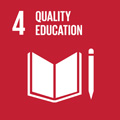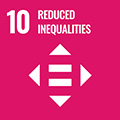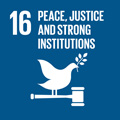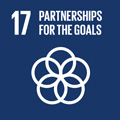- Docente: Giuseppina Paola Viscardi
- Credits: 12
- SSD: M-STO/06
- Language: Italian
- Moduli: Giuseppina Paola Viscardi (Modulo 1) Davide Dainese (Modulo 2)
- Teaching Mode: In-person learning (entirely or partially) (Modulo 1); In-person learning (entirely or partially) (Modulo 2)
- Campus: Bologna
- Corso: First cycle degree programme (L) in Anthropology, Religions, Oriental Civilizations (cod. 8493)
-
from Sep 18, 2024 to Nov 08, 2024
-
from Nov 13, 2024 to Dec 20, 2024
Learning outcomes
The course provides a theoretical and historical framework on religious phenomena, then moving on to an internal examination of some religions as systems - Judaism, Hinduism, Christianity and Islam; at the end of the course the student acquires skills for the interpretation of the relationships between religions and contemporary society.
Course contents
The course addresses issues, problems and perspectives in the study of religious “fact” or “phenomenon” from a historical-critical perspective. More in detail, the following will be addressed: the specificity of the epistemological status of the discipline and of the historical-religious method, its intrinsic historicity, the peculiarity of its sources and manifestations, through the examination of theoretical and methodological contributions provided by different fields of knowledge, highlighting multi-disciplinarity as a peculiar feature in the formation and evolution of so-called religious studies.
The course is structured in two modules or parts, taught respectively by Prof. Giuseppina Paola Viscardi (Part I) and Prof. Davide Dainese (Part II).
In Module/Part I, an introductory and general overview of the history of studies and specialized vocabulary will be provided, including by reading selected excerpts from selected authors.
In Module/Part II, the focus will be on the specific problem of religious illiteracy and the contributions of Weber's sociology to the analysis of the religious phenomenon.
PART I
Prof. Giuseppina Paola Viscardi
Religion/religions: from the definition of the object of inquiry to the analysis of the religious “fact” or “phenomenon.” Subject, method, taxonomies. The articulation is divided into three parts:
1. Definition of issues and operational concepts (Lessons: 1-5)
1.1. What is religion. From ancient terminology to early modern thought; religion and institution; religion and society.
1.2. The second nineteenth century and the birth of Comparative Religion Studies: identification of the object of inquiry and definition of the category of “sacred.”
1.3. Secularization and scientific inquiry: the historical-comparative method and the concept of “analogy.” Taxonomy and classifications: the system of religions and religions as historical products.
2. Orientations and perspectives (lectures 6-10)
2.1. Late 19th and early 20th centuries: the evolutionist model: a) German cultural-historical studies and comparative linguistics (Muller and Lang); b) French sociology (Comte, Durkheim); c) British anthropology (Spencer, Tylor, Frazer). Psychoanalysis (Freud). Introduction of key concepts: myth, ritual, sacrifice, symbol, totem, taboo.
2.2. Phenomenology (Otto, van der Leeuw, Eliade) and historicism (Pettazzoni school: Brelich, De Martino, Lanternari, Bianchi, Sabbatucci). Introduction of key concepts: hierophany, mysticism.
2.3. Functionalism (Boas, Malinowski) and structuralism (Dumézil, Levi-Strauss).
3. Epistemological turn(s) (lectures 11-15)
3.1. Second twentieth century: deconstructionism and critical rethinking of epistemological categories of knowledge: Discourse analysis, postcolonial studies, gender studies.
3.2. Religious sciences: Religious studies as a multidisciplinary field of inquiry.
3.3. Neo-evolutionism, cognitive science of religion, neuroscience: religion as a human phenomenon. Key concepts: agency, counterintuitive inference, cognitive bias.
PART II
Prof. Davide Dainese
4. Religious illiteracy: Social awareness of the religious phenomenon and its roots in school and college education.
5. The sociological approach to the religious phenomenon: Max Weber and his legacy.
Lesson period:
MODULE 1: Sep 18, 2024 - Oct 25, 2024
MODULE 2: Nov 13, 2024 - Dec 20, 2024
Readings/Bibliography
Attending students:
Part I
- G. FILORAMO, M. C. GIORDA, N. SPINETO, Manuale di scienze della religione, Morcelliana, Brescia 2019, only the pages indicated below: 5-103; 167-221 [Available in the library: GIORGIO R. FRANCI - coll. REL. 01838].
- P. ANTES, A.W. GEERTZ, M. ROTHSTEIN (eds.), Contemporary Views on Comparative Religion, Equinox, Sheffield and Bristol 2016: an essay chosen by the student from those selected on the pages: 33-46; 47-58; 87-99; 127-140; 141-152 [resource available on-line (https://virtuale.unibo.it/)].
- J.Z. SMITH, Religion, Religions, Religious, in Mark C. Taylor (ed.), Critical Terms for Religious Studies, The University of Chicago Press, Chicago & London 1998, Chapter Fifteen, pp. 269-284 [resource available on-line (https://virtuale.unibo.it/)].
Part II
- A. MELLONI, Rapporto sull’analfabetismo religioso in Italia, Bologna 2013.
- M. WEBER, Sociologia delle religioni, vol. 1 L’etica protestante e lo spirito del capitalismo [any edition].
Non-attending students:
Part I
- G. FILORAMO, M. C. GIORDA, N. SPINETO, Manuale di scienze della religione, Morcelliana, Brescia 2019, only the pages indicated below: 5-103; 167-221 [Available in the library: GIORGIO R. FRANCI - coll. REL. 01838].
- P. ANTES, A.W. GEERTZ, M. ROTHSTEIN (eds.), Contemporary Views on Comparative Religion, Equinox, Sheffield and Bristol 2016: an essay chosen by the student from those selected on the pages: 33-46; 47-58; 87-99; 127-140; 141-152 [resource available on-line (https://virtuale.unibo.it/)].
- J.Z. SMITH, Religion, Religions, Religious, in Mark C. Taylor (ed.), Critical Terms for Religious Studies, The University of Chicago Press, Chicago & London 1998, Chapter Fifteen, pp. 269-284 [resource available on-line (https://virtuale.unibo.it/)].
- A. NORENZAYAN, Grandi dei. Come la religione ha trasformato la nostra vita di gruppo, Raffaello Cortina, Milano 2014 [Available in the library: ARCHIGINNASIO - coll. 20. W.00 03697].
Part II
- A. MELLONI, Rapporto sull’analfabetismo religioso in Italia, Il Mulino, Bologna 2013.
- M. WEBER, Sociologia delle religioni, vol. 1 L’etica protestante e lo spirito del capitalismo [any edition].
- É. DURKHEIM, Le forme elementari della vita religiosa, Meltemi, Roma 2005 / Morcelliana, Brescia 2020 [or any other edition].
Teaching methods
Lessons are held exclusively in presence and are not registered.
Online/in-person lectures, analysis of texts, critical reading of journalistic sources (written and audiovisual). Reflections on case studies that allow students to develop their scientific considerations independently, applying the tools they have learned over time. More specifically in this context, the course aims to achieve five overarching goals: to render students able to:
-
identify and analyze the characterizing forms of religious phenomena;
-
acquire skills for interpreting the relationships between religions and society;
-
read, analyze, summarize, understand and explain explicit and implicit information from texts on historical-religious theories;
-
develop an initial historical-critical interpretation of textual and iconographic/audiovisual sources inherent to religious phenomena;
-
master the fundamental scientific vocabulary of religious phenomena.
Assessment methods
Students who attend at least 75% of the lessons are considered to be attending.
Course attendance facilitates understanding of content but does not affect the student’s assessment.
The final assessment test consists of a written questionnaire (or test) to be taken strictly in the classroom.
The test consists of three open-ended questions to which are respectively awarded 1 to 11 points for question 1; 1 to 10 points for question 2; and 1 to 10 points for question 3. The sum of the maximum score equals a grade of 30 cum laudem.
Questions will cover the topics covered in the course and will be intended to test the study of the texts listed as bibliographic material under Texts/Bibliography.
The exam is administered through the EOL (Exams On Line) application. The test has a duration of two hours.
N.B. each student should be equipped with his/her own laptop (or tablet or smartphone). It is not necessary to have a second electronic device besides the one from which the test is taken.
In case of inability to show up with a personal device, it will still be possible to take the test from a device present in the classroom) and, in any case, for those who do not have an electronic device, it is advisable to have protocol sheets and a pen so that they can take the test in paper mode.
Both teachers will be present in the classroom supervision phase.
To register for the appeals, please use the Almaexams website.
* In the course of the academic year there are 7 exam appeals generally scheduled for the months of December, January, February, May, June, July and September for all students.
The appeal dates for academic year 2024-25 are as follows:
- 20 December 2024
- 17 January 2025
- 07 February 2025
- 30 May 2025
- 06 June 2025
- 25 July 2025
- 12 September 2025
Evaluation criteria:
Thorough and detailed knowledge of the content of the texts.
Critical and argumentative skills.
Ownership of language and and expository skills (written and oral).
Grading scale:
Excellent (with possible award of praise in the case of even original exposition): achievement of an organic view of the topics proposed during the lectures and critical use that demonstrates mastery of content and technical vocabulary.
Average rating: mnemonic knowledge and not entirely accurate use of technical vocabulary.
Sufficient assessment: minimal knowledge of the topics covered (dates and names), without serious errors.
Insufficiency: lack of minimum requirements (i.e., sufficient assessment).
Insufficiency can be verbalized as “rejected/a”: the negative evaluation does not result in a grade, but only in a judgment reported on the transcript; it is not included in the curriculum, so it does not affect the final grade point average.
Teaching tools
Paper documents and audiovisual materials, as well as PowerPoint presentations and slide shows, may be used during lectures at the discretion of the lecturers.
* Students who require specific services and adaptations to teaching activities due to a disability or specific learning disorders (SLD), must first contact the appropriate office: [https://site.unibo.it/studenti-con-disabilita-e-dsa/en/for-students].
Office hours
See the website of Giuseppina Paola Viscardi
See the website of Davide Dainese
SDGs




This teaching activity contributes to the achievement of the Sustainable Development Goals of the UN 2030 Agenda.
